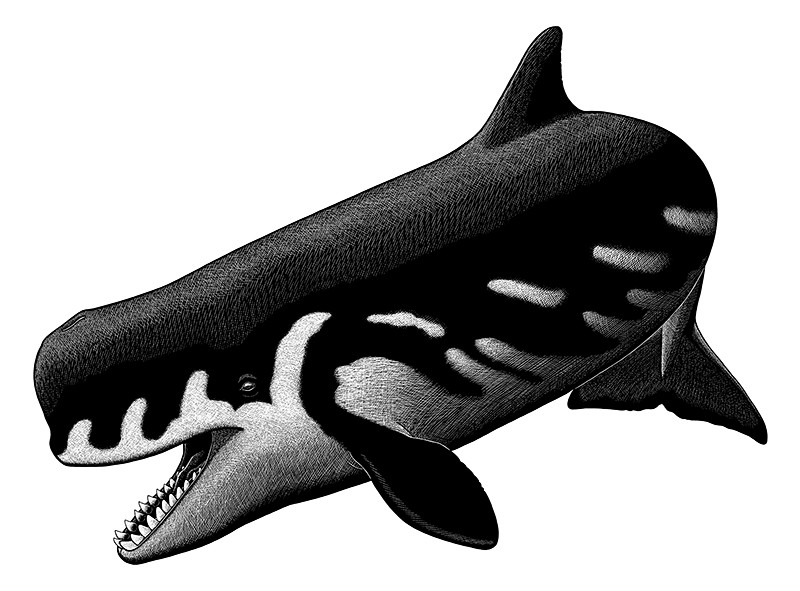The modern sperm whale is already an impressive animal, being by far the largest of the living toothed whales and famous for its ability to dive over 2km down (1.2 miles) to feed on deep-sea animals like giant squid.
But some of its ancient relatives were terrifying.
Livyatan melvillei here has an appropriately monstrous name, inspired by both the Hebrew name for the Leviathan and Herman Melville, the author of Moby-Dick. Known from the Pacific coast of South America during the late Miocene, around 10-9 million years ago, it’s estimated to have measured somewhere between 13.5m and 17.5m long (~44′-57′) – comparable in size to an adult male sperm whale.
Unlike the relatively slender mouth of its modern cousin, however, it instead had thick strong jaws full of enormous teeth.

(for an idea of the sheer size of this reconstructed skull – some of those teeth are almost the length of your forearm)
It was part of a loose grouping of what are known as “macroraptorial sperm whales“, which all had similarly toothy jaws and occupied the same sort of ecological niche as modern orcas, specializing in hunting prey like large fish, squid, seals, and other whales.
Livyatan‘s main food source was probably smaller baleen whales about half its own size, and its only real competition for this prey was the equally huge megalodon shark that shared the same waters.
A huge fossil tooth found in Australia suggests that Livyatan or a very close relative of it survived at least into the early Pliocene, about 5 million years ago. Around this time a cooling climate and dwindling numbers of its preferred prey would have eventually made a population of such enormous apex predators unsustainable, and driven this “killer sperm whale” into extinction – probably around the same time megalodon disappeared, about 3.6 million years ago.

